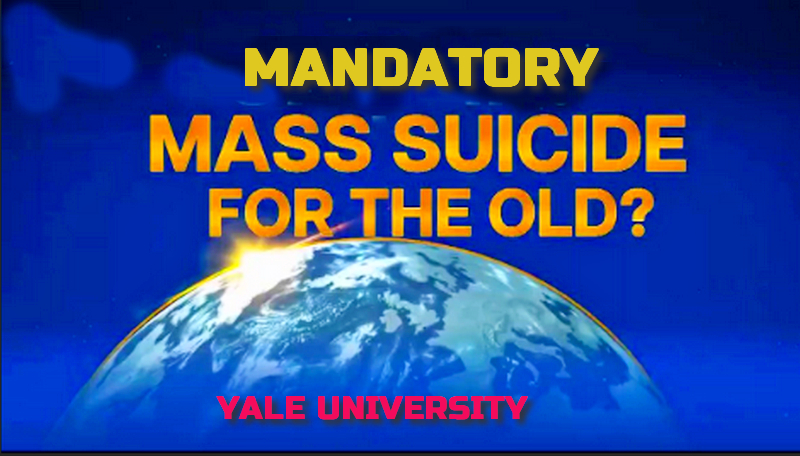State-Mandated Suicide Proposed for Elderly Population; Hearing Reveals Weaponization of Government

By CROSSROADS - JOSHUA PHILIPP February 14, 2023
A Yale professor recently proposed euthanasia as a solution to aging populations. Yusuke Narita, an assistant professor of economics, stated: “I feel like the only solution is pretty clear … In the end, isn’t it mass suicide and mass ‘seppuku’ of the elderly?”
He also stated on euthanasia that there’s a “possibility of making it mandatory in the future.” His comments are stirring debate over the direction that medically assisted death is taking, and whether the end result could be democide.
Meanwhile, Congress recently held its first hearing of the committee on the Weaponization of the Federal Government. It shined a spotlight on government and special interest involvement in censorship policies at major tech companies and social media sites and revealed new allegations on the politicization of the FBI.
In this live Q&A with Crossroads host Joshua Philipp, we’ll discuss these stories and others, and answer questions from the audience.* Click the "Save" button below the video to access it later on "My List."

CROSSROADS - JOSHUA PHILIPP
Our world is growing older: UN DESA releases new report on aging
10 October 2019
Today, there are 703 million people aged 65 or older = 10%
Our world is rapidly growing older. Today, there are 703 million people aged 65 or older, a number that is projected to reach 1.5 billion by 2050. According to the latest population estimates and projections from UN DESA’s Population Division, 1 in 6 people in the world will be over the age of 65 by 2050, up from 1 in 11 in 2019.
The latest projections also show that the number of people aged 80 or over will triple in the next 30 years. In many regions, the population aged 65 will double by 2050, while global life expectancy beyond 65 will increase by 19 years.
All countries are in the midst of this “longevity revolution” – some are at its earlier stages, while some are at a more advanced stage. But all will pass through this extraordinary transition, in which the chance of surviving to age 65 rises from less than 50 percent – as was the case in Sweden in the 1890s – to more than 90 percent at present in countries with the highest life expectancy.
What is more, the proportion of adult life spent beyond age 65 increased from less than one-fifth in the 1960s to a quarter or more in some high-income countries today.
Accurate, consistent, and timely data on population aging are critical for setting appropriate policy priorities and for promoting the well-being of the growing number of older persons around the world. This is particularly important in our collective efforts to achieve the Goals and targets of the 2030 Agenda for Sustainable Development, which pledges to leave no one behind.
Drawing on the latest United Nations population estimates and projections, World Population Ageing 2019 Highlights released today provide global trends and indicators on population aging. The Highlights also discuss different measures of population aging.
The new report confirms that the world’s older population is growing in both absolute and relative terms with the highest growth rates experienced in Eastern and South-Eastern Asia and in Latin America and the Caribbean. Conventional old-age dependency ratios show that populations are rapidly growing older.
However, newer measures, which take into account rising life expectancy, point toward a slower aging process. Women live, on average, 4.8 years longer than men. However, this age gap is expected to narrow in the coming years.
